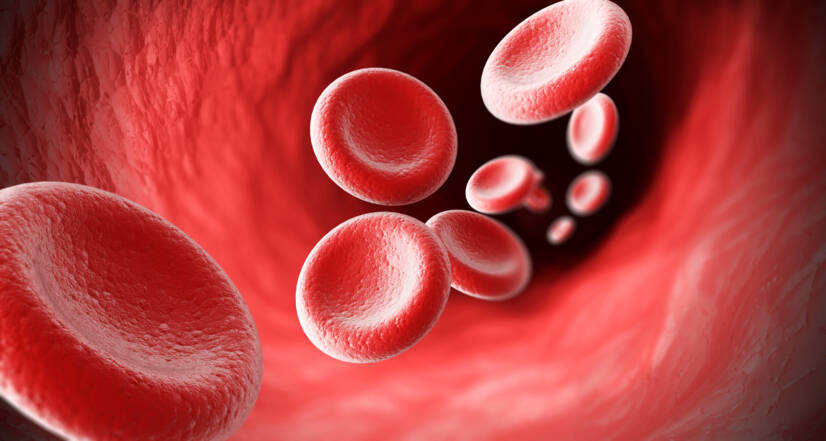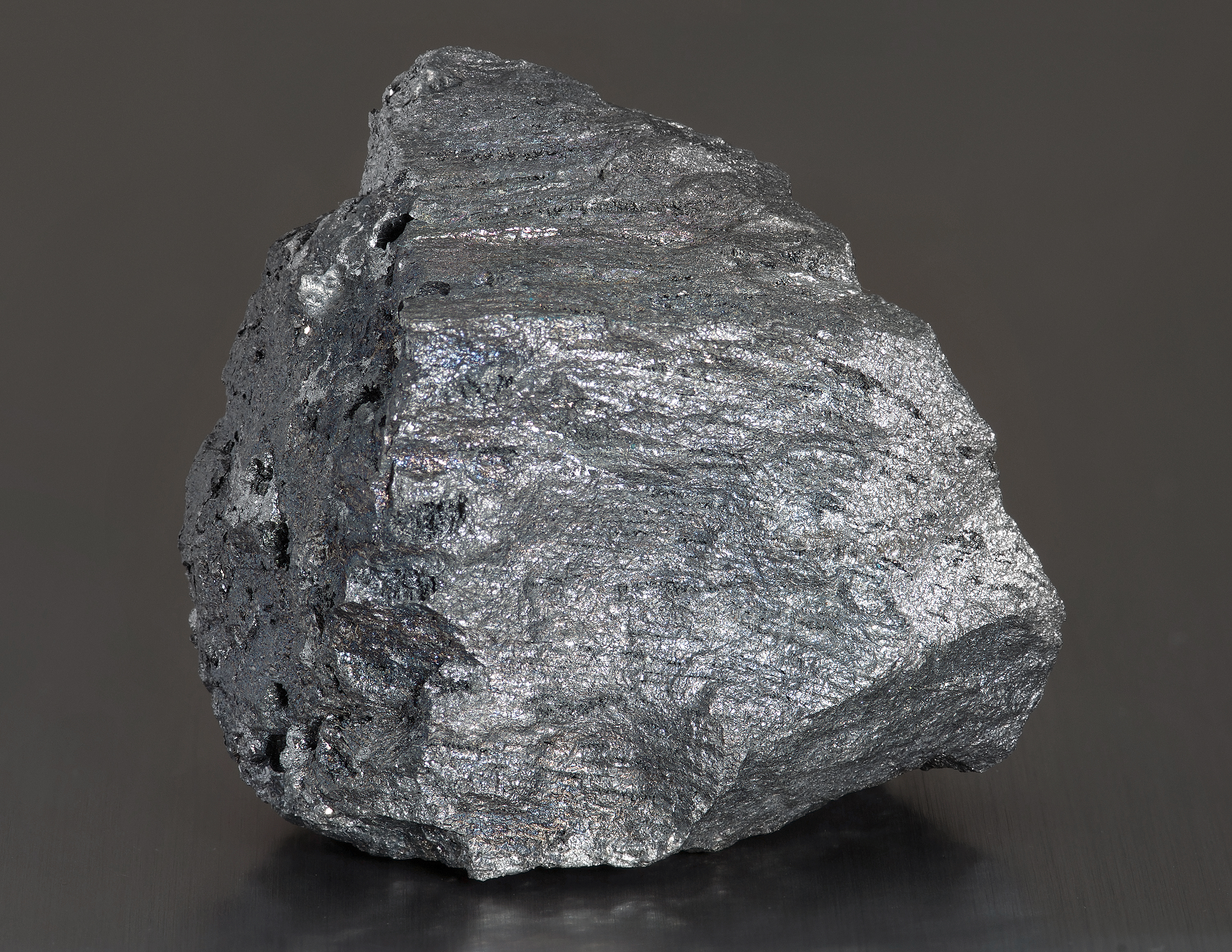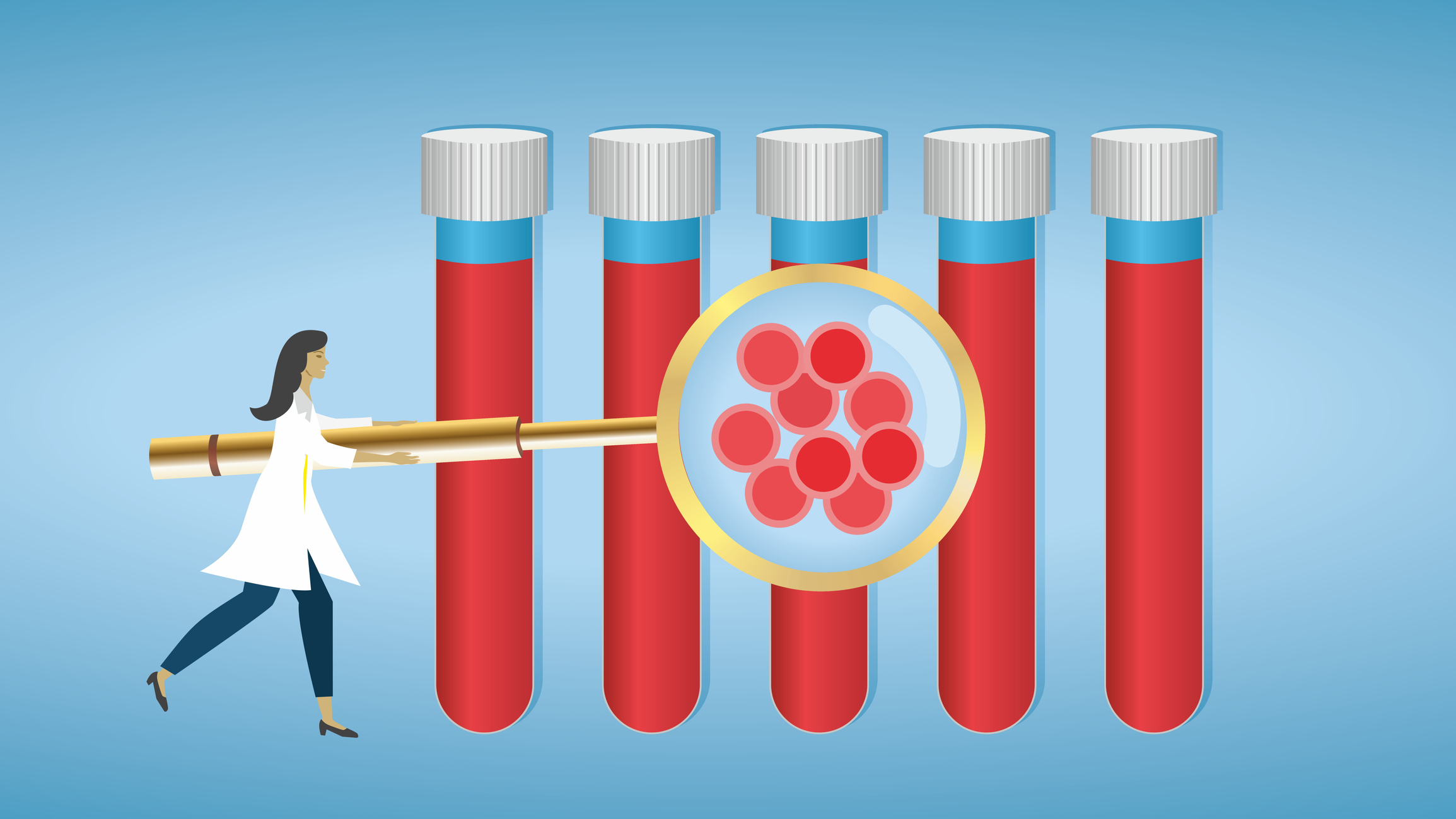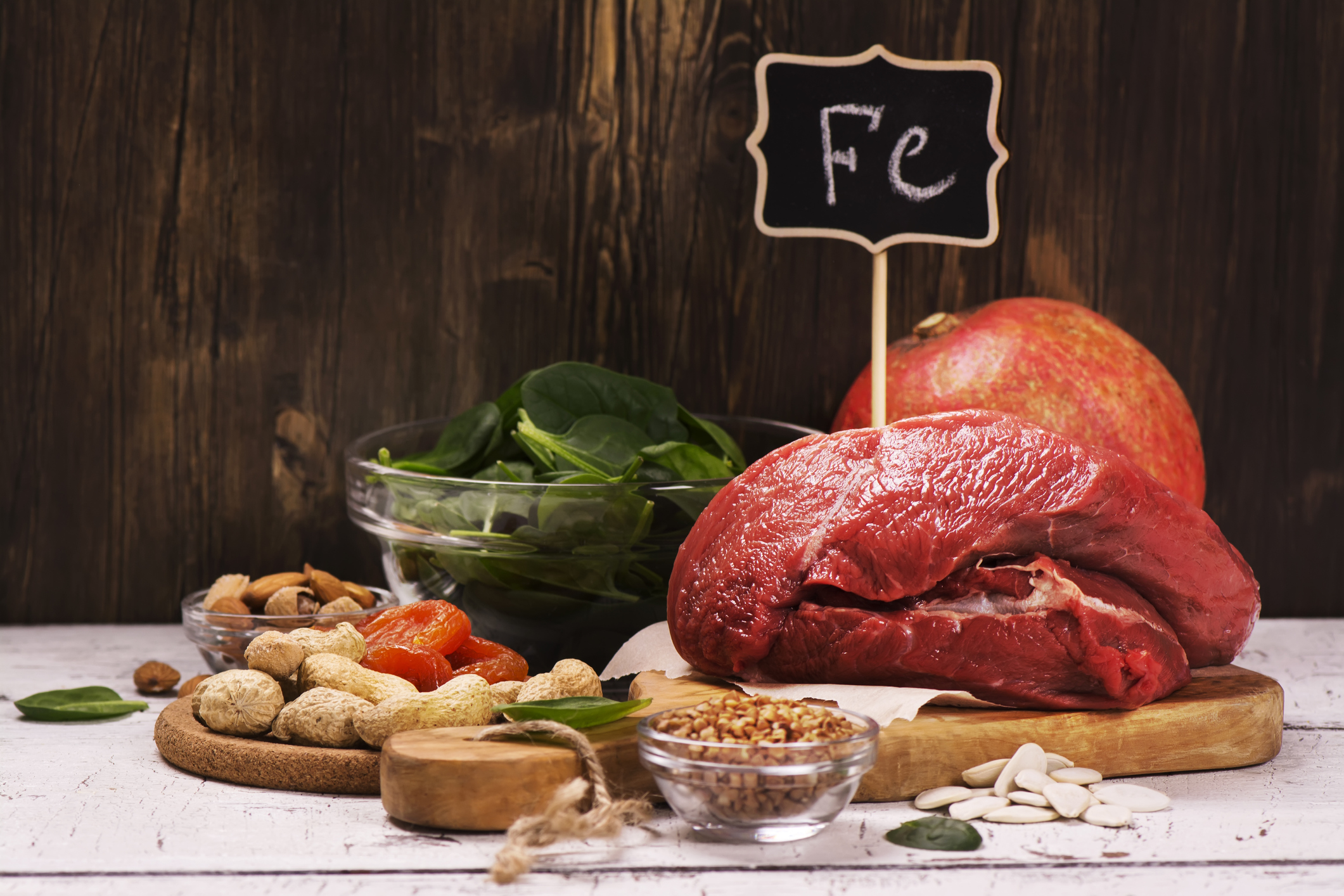- ncbi.nlm.nih.gov - Review on iron and its importance for human health, Nazanin Abbaspour, Richard Hurrell, Roya Kelishadi
- ods.od.nih.gov - Iron
- pubchem.ncbi.nlm.nih.gov - Iron
- annualreviews.org - Iron Metabolism: Iron Deficiency and Iron Overload, Nancy C. Andrews
- multimedia.efsa.europa.eu - Dietary Reference Values finder
- solen.sk - Iron overload and current possibilities of chelation therapy in oncohematology, MUDr. Tomáš Guman, PhD., prof. MUDr. Elena Rothová, CSc., MUDr. Adriana Kafková, PhD., MUDr. Marta Fričová, MUDr. Ingrid Duľová, MUDr. Natália Štecová, MUDr. Monika Hlebašková, MUDr. Milena Surová, MUDr. Vladimír Takáč
- solen.cz - Iron - friend or enemy of man?, doc. MUDr. Radana Neuwirtová, CSc., prof. MUDr. Přemysl Poňka, Ph.D.
Iron: How to replenish it and what reduces it + Iron-rich foods

Iron is an irreplaceable metal for the human body. It is used in a wide range of essential biological functions. What is the importance of iron and what are the risks if iron levels are disturbed?
Article content
What do we know about iron?
Iron is a chemical element that is widespread in our environment. At 30.1%, it is the second most abundant element on Earth after oxygen.
It is also found in the sun, stars and meteorites.
Iron has been known to mankind since prehistoric times. Its important industrial production began around the 18th century.
The chemical name for iron is Fe. It is derived from the Latin name ferrum , which translates as strength.
Iron is an element of group VIII of the periodic table of chemical elements and is found in period 4.
It belongs to a group of elements called transition elements or transition metals.
This name comes from the time when chemists attributed to elements in the middle of the periodic table the transitional properties between alkali metals and non-metals.
In terms of properties, iron is a solid metal with a light grey to white colour. It is hard, brittle, fusible and has low corrosion resistance. It oxidises readily to form hydrated oxides (rust) when exposed to moisture in the air.
In its elemental form, iron is very unstable and reactive, especially in the presence of atmospheric moisture or at high temperatures. It may dissolve on exposure to mineral acids.
Tabular summary of basic chemical and physical information on iron
| Name | Iron |
| Latin name | Ferrum |
| Chemical name | Fe |
| Classification of elements | Transition metal |
| Grouping | Solid |
| Proton number | 26 |
| Atomic mass | 55,845 |
| Oxidation number | +2, +3, +4, +6 |
| Density | 7,874 g/cm3 |
| Melting point | 1538 °C |
| Boiling point | 2861 °C |
| Hardness | 4 |
The vast majority of iron occurs naturally in the form of minerals containing this element. These include hematite (Fe2O3), magnetite (Fe3O4), siderite (FeCO3), which are the main iron ores, and limonite (FeO(OH)-nH2O) or taconite.
Iron is used to produce alloys such as steel, stainless steel, cast iron, etc.
In addition to being known as one of the most important industrial substances, iron can also be considered one of the most important elements in the human body in terms of its wide application in biochemical processes.

People have been aware of the importance of iron in relation to health and disease since ancient times. The first use of iron for medical purposes is associated with the Egyptians, Greeks and Romans.
In the 17th century, iron was used to treat chlorosis, a condition caused by iron deficiency.
However, convincing evidence that inorganic iron is necessary for the synthesis of haemoglobin did not come until 1932.
What is another biological function of iron and in what life processes is it indispensable?
What is the importance of iron for humans?
Iron is an essential element. It is necessary for almost all living organisms. It is involved in many metabolic processes, including oxygen and electron transfer and DNA formation.
It is one of the so-called microbiogenic elements. These usually make up less than 0.005% of the body's weight.
Approximately 3-4 grams of iron are found in the human body. This amount is distributed as follows:
- 65-70% in haemoglobin molecules, which is a red blood pigment contained in red blood cells.
- 3-4% in myoglobin, a protein found in the muscles that allows it to bind oxygen
- 15-30% is storage iron, which is bound to a protein - ferritin or hemosiderin
- About 1% in enzymes such as cytochromes, cytochrome oxidase or peroxidase
- 0.1% is transport iron, which is found in blood plasma where it binds to proteins (especially the protein transferrin)
The concentration of iron in the body is strictly regulated. This is because iron is capable of generating free radicals and can cause tissue damage when present in excess.
Iron has several important functions in the human body.
First of all, it is involved in the transport of gases found in the blood - specifically oxygen.
Up to almost 70% of iron is part of haemoglobin, which is found in red blood cells, specifically one of the parts of haemoglobin called haem.
Heme is a complex non-protein compound whose central atom is iron. Heme, together with the protein part of globin, forms the haemoglobin molecule.
Haemoglobin is responsible for carrying oxygen in the blood, from the lungs to the tissues and cells. Oxygen binds to the haemoglobin molecule in the lung chambers. Oxyhaemoglobin is formed. This is how oxygen is carried to the cells.
Haemoglobin is also able to bind and carry carbon dioxide from the cells to the lungs, where it is then exhaled as waste. Unlike oxygen, which binds to haemoglobin, carbon dioxide binds to the protein part - globin.
In addition to haemoglobin, iron is also a component of myoglobin. This is a protein found in muscles. It is also involved in oxygen transport, but in muscle cells. It is found in the muscle cells of the heart and in skeletal muscle.
Structurally, myoglobin is much simpler than hemoglobin.
One molecule of haemoglobin is able to bind 4 molecules of oxygen. In the case of the myoglobin molecule, it is only one molecule of oxygen.
In addition to the above, we know other biological functions of iron in the human body.
- It ensures the normal functioning of the brain, muscles, thyroid and immune system.
- It is involved in energy production.
- It has a positive effect on the skin, hair and nails.
- Suppresses fatigue.
- Promotes mental health, reduces the risk of mental illness.
- Supports fetal development.
How does the body treat iron?
Absorption
Iron enters the body through food. It is absorbed primarily in the early part of the intestinal tract through a specific carrier protein. It then enters the blood.
The primary absorbed form of iron is the divalent form, i.e. Fe+2. The trivalent form Fe+3 has a low absorption capacity.
The proportion of absorbed iron compared to the total iron in the diet is relatively low, 5-35%. This proportion depends on the circumstances and especially on the physical state of the iron ingested.
At physiological pH, iron with an oxidation state of +2 is significantly oxidised to an insoluble form of iron with an oxidation state of +3. The pH decreases in the initial part of the small intestine due to the action of gastric acid. This leads to a reduction of Fe+3 to Fe+2 and a significant increase in the rate of iron absorption.
Thus, gastric acid has a significant effect on iron absorption. In its deficiency, iron absorption is reduced.
In the blood, iron is bound to the protein transferrin, through which it is transported to the cells or bone marrow.
Regulation of iron levels
The amount of iron in the body must be constantly controlled because of its possible toxicity at high concentrations. It is therefore necessary to maintain a balance in the intake, transport, storage and use of iron. We speak of maintaining homeostasis.
Since the human body does not have mechanisms for active excretion of iron from the body, iron levels must be strictly controlled and regulated from the time of absorption.
The function of such a regulator is performed by hepcidin, a peptide hormone produced in the cells of the pecenum. It maintains homeostasis by coordinating the process of iron storage and utilization and instructing the blood to decrease or increase absorption as necessary.
A disturbance in the level or function of hepcidin leads to an excess of iron in the body or, conversely, to an iron deficiency.

Storage
Iron is stored in the body in the form of body stores.
By body stores of iron (storage iron) we mean iron bound to the proteins ferritin and hemosiderin. The concentration of these two proteins gives us a picture of iron stores.
Most of the iron is bound to ferritin. Iron is more difficult to release from hemosiderin.
Iron bound in this way is insoluble and concentrates mainly in the liver, spleen and bone marrow.
Excretion
The human body does not have a mechanism for active excretion of iron. It is therefore largely stored in the body and cannot be easily removed.
In some situations, such as bleeding, menstruation or pregnancy, iron may be lost from the body in certain amounts. During menstruation, an adult woman loses about 2 mg of iron per day.
However, some periodic iron loss also occurs through the physiological breakdown of cells in the skin, digestive or genitourinary tract. However, these losses are very low (approximately 1 mg per day).
Given the limited possibilities for iron excretion, regulation of iron levels is therefore considered essential and necessary.
What about dietary iron intake?
Dietary iron can be present in two basic forms - as heme or non-heme iron.
The main sources of the heme form are hemoglobin and myoglobin from foods such as meat, poultry, fish and seafood.
The rate of iron absorption in this case is high (15-25% of the total iron content). It is also only minimally limited by the composition of the food consumed at the same time.
The non-heme form of iron is most abundant in cereals, legumes, vegetables and fruit. The rate of iron absorption is already much lower (2-20 % of total iron) and is also significantly influenced by other dietary components.
In practice, however, the non-heme iron content of the diet is many times higher than the heme iron content. Therefore, despite the lower absorption rate, non-heme iron contributes more to the diet.
Which substances, either foods or drugs, affect (decrease or increase) iron absorption?
A tabular overview of foods and some drugs that affect iron absorption in the digestive tract
| Substances that decrease iron absorption | Substances that increase iron absorption |
|
|
In animal studies, iron absorption has also been shown to be affected by metals - manganese, cobalt, strontium or lead. These metals compete with each other for binding to the transporter for absorption.
Don't forget vitamin C
Vitamin C plays a very important role in the absorption of iron in the intestinal tract, which has been shown in several scientific studies.
Its action consists in the reduction of insoluble forms of Fe+3 to soluble Fe+2 and also in its mild chelating effect. It helps to improve the solubility of iron.
It is even able to significantly reduce the inhibitory effect of phytates, polyphenols, calcium and milk proteins.
Iron supplements should therefore be taken, for example, with orange juice.
Cooking, industrial processing or storage of foods containing vitamin C causes the breakdown of vitamin C. This eliminates its beneficial effect on iron absorption.
Vitamin C is one of the few substances that increase iron absorption in vegetarian and vegan diets. Therefore, it is necessary to optimise absorption by including vegetables and fruits with sufficient amounts of this vitamin.
In the context of iron-containing foods, it is also important to mention what the ideal daily intake of iron should be for a person, depending on their gender or age.
What is the recommended daily intake of iron?
According to the European Food Safety Authority, the recommendations for daily iron intake are as follows.
Table of daily iron intake according to age and sex
| Age group | Women | Men |
| Infants (aged 7-11 months) | 8-11 mg/day | 8-11 mg/day |
| Children (aged 1-6 years) | 5-7 mg/day | 5-7 mg/day |
| Children (aged 7-11 years) | 8-11 mg/day | 8-11 mg/day |
| Adolescents (aged 12-17 years) | 7-13 mg/day | 8-11 mg/day |
| Adults (age = 18 years) | 7-16 mg/day | 6-11 mg/day |
| Postmenopausal women (age = 40 years) | 6-11 mg/day | - |
| Pregnant women | 7-16 mg/day | - |
| Breastfeeding women | 7-16 mg/day | - |

Iron deficiency versus iron excess
As with almost all substances essential for the body, deviations from physiological iron levels have a negative impact on health.
Two conditions can occur - excess iron in the body or iron deficiency.
There are risk groups of people who are more likely to be iron deficient.
Iron deficiency is most likely in populations that have inadequate access to a diet rich in iron in an absorbable form. This is especially true during the developmental phase when iron requirements are high.
By this we mean groups such as children, adolescents, women of reproductive age and women in pregnancy.
In children and adolescents, the increased need for iron is due to their rapid growth. In women of reproductive age, it is due to excessive blood loss during regular menstruation.
During pregnancy, women's bodies need more iron because of the rapid growth of the placenta and fetus.
Regular blood donors, people with digestive tract diseases, heart problems or cancer may also be at risk of a reduction in body iron stores.
Iron deficiency - how does it manifest itself and what causes it?
Iron deficiency is defined as a condition in which the body's iron stores are not present and the supply of iron to the tissues is impaired.
Iron deficiency is usually referred to as anaemia. However, deficiency can exist without the development of anaemia. This condition is more rare and manifests itself in certain functional changes in the body.
However, the vast majority of cases of iron deficiency are associated with anemia.
Anemia in the true sense of the word is a condition characterized by a low number of red blood cells or a low amount of hemoglobin in the blood cells.
The formation and quantity of red blood cells depends not only on the availability of iron, but also on a number of other related factors, such as the production of erythropoietin in the kidneys (the substance that coordinates the production of red blood cells), the bone marrow (where the cells are formed), and nutritional status.
How do I know if I have anaemia?
Short-term iron deficiency usually has no visible symptoms. In fact, the body uses its own stores to cover short-term iron deficiency, mainly from the muscles, liver, spleen and bone marrow.
Long-term deficiency can cause weakness, fatigue, lack of energy, memory and concentration problems, digestive problems, and increased susceptibility to infections.
The most serious consequences of long-term anaemia are functional impairments affecting mainly cognitive abilities and development (the ability to perceive and think) or immune function.
In pregnant women, anaemia is associated with adverse effects on both mother and foetus - increased risk of sepsis, low birth weight of the foetus or risk of maternal and foetal death.
Anemia is not a disease in itself. It is a symptom of a developed disease or disease process in the body.
There may be several causes of iron deficiency - anaemia. These are some of them:
- Insufficient intake of absorbable forms of iron in the diet
- Inadequate intake of vitamins and minerals that are also involved in the formation of red blood cells (vitamin B12, vitamin A, riboflavin, copper)
- Impaired absorption of iron
- Physiologically increased requirements for its intake (during growth, pregnancy, menstruation, patients undergoing dialysis)
- Excessive blood loss
- Bleeding from the digestive or genitourinary tract
- Use of certain medications (corticosteroids, drugs to treat tuberculosis)
- Certain diseases (acute and chronic infections, postoperative conditions, thyroid or kidney disease)
- Blood diseases such as sickle cell anaemia, thalassaemia, aplastic anaemia, haemolytic anaemia
- Obesity
- Alcoholism
- Vegetarian diet, lack of meat
Iron deficiency caused by inadequate dietary iron intake can be compensated for in several ways.
The key steps are selecting foods rich in iron, fortifying foods with iron, i.e. deliberately adding this element to foods to increase its content.
Then, improving iron absorption or supplementing it in the form of food supplements or medicines.
Dietary iron supplements
Before starting iron supplements, it should always be considered that anaemia may be caused by a disease. This disease should be the first consideration.
Currently, single-ingredient products or combined multivitamin products containing iron are available on the market.
The most commonly used are iron salts such as ferrous sulphate and ferrous gluconate. This is because of their low cost and high absorption. They are taken orally (by mouth).
The absorption of iron is highest when they are given orally. However, this method of administration can cause nausea and abdominal pain. In this case, the dose should be reduced or taken at the same time as food.
Symptoms of iron overuse and a reliable indicator that your dose is too high are nausea, constipation, abdominal pain, vomiting or dizziness.
Let's also look at what, in turn, is a consequence of excess iron in the body.
What are the consequences of excess iron?
The danger of iron is that it can accelerate the production of toxic oxygen radicals that damage cells and tissues.
Also, at physiological pH and in the presence of oxygen, it rapidly oxidizes and precipitates into insoluble iron hydroxides.
High levels of iron in the human body lead to its deposition in organs such as the liver, heart, pancreas or skin. This causes their pathological changes and the development of disease.
The cause of excess iron in the body can be:
- Its excessive intake in the diet
- Repeated blood transfusions
- Diseases associated with increased hemoglobin breakdown
Diseases that are characterized by the accumulation of iron in the organs are called hemochromatosis or hemosiderosis.
Haemochromatosis is a hereditary disease caused by excessive absorption of iron in the digestive tract.
Hemosiderosis usually occurs in patients with acquired or congenital anemia who repeatedly receive blood transfusions and the body is unable to properly utilize the iron received.
The negative consequences and complications of these disorders are liver, heart and glandular damage. They lead to cirrhosis, liver cancer, diabetes, thyroid disease, heart and nerve disease and inflammatory joint disease.
Initial manifestations include weakness, abdominal pain, excessive skin pigmentation, irregular heartbeat, heart attack, heart failure, loss of menstruation, hair loss, hip pain and inflammation, osteoporosis, and softening of the liver and spleen.
What are the treatment options for high iron levels?
Currently, chelation therapy is the only preventive and curative method.
This treatment reduces the amount of tissue iron and prevents its accumulation. It also neutralizes its toxic forms.
The principle of the treatment is that the iron binds to the chelating agent and is subsequently eliminated from the body through urine or faeces.
Chelating agents can be administered intravenously (into a vein) or orally (by mouth).
Examples of chelating agents used are deferoxamine (for intravenous administration), deferiprone or deferasirox (both for oral administration).
Interesting resources
Related










